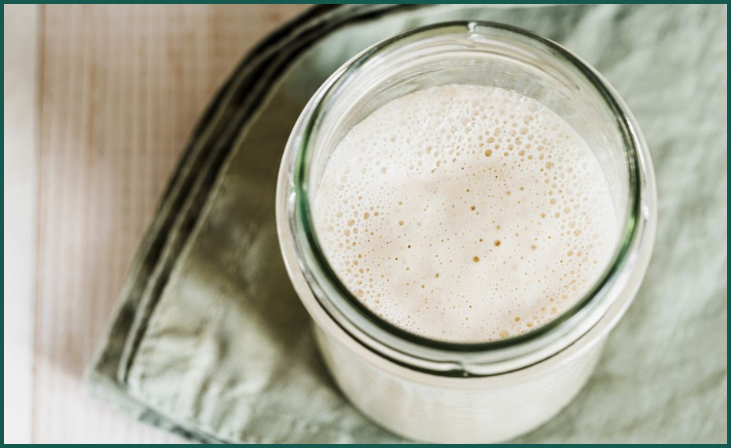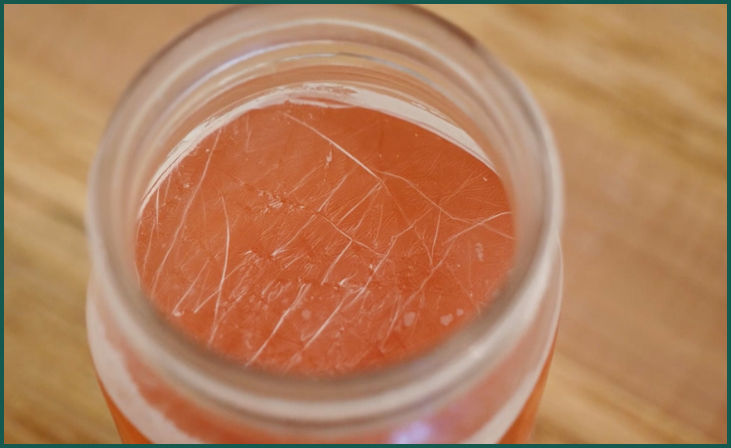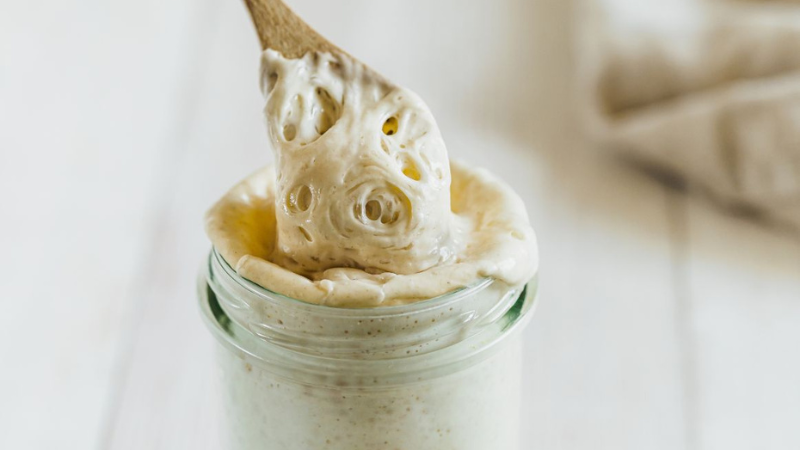Kahm yeast, a common concern among fermentation enthusiasts, is a surface yeast that can develop during the fermentation process. Often appearing as a thin, white film on the surface of fermented foods, Kahm-yeast can cause uncertainty and worry among those new to fermenting. Understanding the nature of Kahm-yeast and its potential safety implications is crucial for anyone venturing into the world of fermentation.
Table of Contents
ToggleWhat is Kahm Yeast?
Kahm yeast is a common occurrence in the realm of fermentation, often appearing as a thin, whitish layer on the surface of various fermented foods and beverages. It is a type of surface yeast that can develop during the fermentation process, particularly in homemade or naturally fermented products. Despite its name, Kahm-yeast is not a true yeast but rather a combination of bacteria and wild yeasts that form a film on the surface of the fermenting liquid.
One of the key characteristics of Kahm-yeast is its delicate, often wrinkled appearance, resembling a thin, milky layer that can easily be mistaken for mold. However, unlike mold, Kahm-yeast is typically harmless and does not pose a significant threat to the quality or safety of the fermentation process. While its presence may cause concern for novice fermenters, experienced enthusiasts recognize it as a natural part of the fermentation process, especially in environments where the conditions are conducive to the growth of wild yeasts and bacteria.
Kahm yeast commonly appears during the fermentation of a diverse range of foods and beverages, including but not limited to kombucha, sauerkraut, pickles, and other lacto-fermented products. Its development is often influenced by various factors, such as temperature, exposure to air, and the presence of natural sugars. While it may not necessarily be desired, understanding the nature of Kahm-yeast is crucial for distinguishing it from harmful contaminants and ensuring the successful and safe production of fermented foods at home.
Also Read: How to Make Kombucha
Is Kahm Yeast Safe?

Kahm-yeast, in most cases, is considered safe to consume. While its presence might initially raise concerns, particularly among those new to fermentation, it is generally not harmful or toxic. However, it is essential to exercise caution and employ proper judgment when encountering Kahm yeast during the fermentation process.
The safety of Kahm yeast largely depends on the conditions under which the fermentation took place and the overall hygiene and sanitation practices followed during the process. When the fermentation vessel is adequately sanitized, and the environment is conducive to the growth of beneficial bacteria and yeasts, Kahm-yeast is typically harmless. Proper temperature control, adequate air circulation, and the use of high-quality ingredients can contribute to a successful fermentation process, minimizing the risk of harmful contaminants.
Don't just scroll, subscribe!
BuzzTrail's unique web-stories are the cure for boredom you've been waiting for.
Despite its generally benign nature, it is crucial to remain vigilant and attentive during the fermentation process. Any signs of contamination, unusual odors, or off-putting changes in texture or color should not be overlooked. If the fermentation batch shows any concerning characteristics or if there are doubts about the safety of the product, it is advisable to err on the side of caution and discard the entire batch. This precautionary approach ensures that the end product is safe for consumption and free from any potential health risks.
Furthermore, maintaining a clean and well-sanitized fermentation environment is essential for preventing the growth of harmful pathogens and ensuring the safety of the fermented foods. By adhering to proper fermentation protocols and keeping a close eye on the development of Kahm-yeast, fermenters can enjoy their homemade products with confidence, knowing that they have taken the necessary steps to prioritize both the quality and safety of their culinary creations.
Also Read: How to Make Ginger Bug
7 Expert Tips and Insights

Here are 7 expert tips and insights regarding Kahm yeast and fermentation:
- Maintain Proper Sanitation: Ensure that all fermentation equipment and utensils are thoroughly cleaned and sanitized before and after each use. This practice helps minimize the risk of contamination and encourages the growth of beneficial microorganisms while deterring harmful pathogens.
- Monitor Temperature and Environment: Control the fermentation environment by maintaining consistent temperatures and appropriate levels of humidity. Avoid extreme temperature fluctuations that may encourage the growth of unwanted microorganisms, including Kahm yeast.
- Use Quality Ingredients: Start with fresh, high-quality ingredients to promote a healthy fermentation process. Quality produce contains an optimal balance of nutrients and microorganisms that facilitate the growth of beneficial bacteria and yeasts while minimizing the likelihood of Kahm-yeast development.
- Implement Proper Air Circulation: Provide adequate ventilation during the fermentation process to facilitate the exchange of gases and discourage the formation of surface yeasts like Kahm yeast. Proper air circulation helps maintain a favorable environment for the desired fermentation while reducing the likelihood of contamination.
- Conduct Regular Inspections: Regularly inspect fermenting batches for any signs of Kahm-yeast development or other unusual changes. Early detection allows for prompt action, minimizing the risk of Kahm yeast proliferation and ensuring the safety and quality of the final product.
- Practice Patience: Allow sufficient time for the fermentation process to unfold naturally. Rushing the fermentation process can disrupt the delicate balance of microorganisms, potentially leading to the growth of Kahm yeast or other unwanted contaminants.
- Seek Guidance from Experienced Fermenters: Consult experienced fermentation enthusiasts or seek advice from reputable sources to gain valuable insights and practical tips for managing Kahm yeast and ensuring successful fermentation outcomes. Learning from the experiences of seasoned fermenters can provide valuable guidance and foster a deeper understanding of the fermentation process.
Also Read: How to Make Beet Kvass
Conclusion
While the presence of Kahm yeast may initially raise concerns, it is generally not a cause for alarm in well-controlled fermentation processes. Being able to distinguish Kahm yeast from harmful mold is essential for ensuring the safety and quality of your fermented foods. By maintaining proper sanitation practices and closely monitoring the fermentation process, you can enjoy the benefits of homemade fermented delights without compromising your health or the flavor of your creations.
FAQs
How can I prevent Kahm yeast from forming during fermentation?
How can I prevent Kahm yeast from forming during fermentation?
To prevent the formation of Kahm yeast during fermentation, it is crucial to maintain a clean and controlled environment. Ensure that all equipment and utensils are properly sanitized before use. Additionally, monitor the temperature, provide adequate air circulation, and use high-quality ingredients. Consistent monitoring and adherence to proper fermentation practices can significantly reduce the likelihood of Kahm yeast development.
Can I consume fermented foods with Kahm yeast if it has been removed?
Can I consume fermented foods with Kahm yeast if it has been removed?
While removing Kahm yeast from fermented foods is possible, it is advisable to exercise caution when consuming the remaining product. Ensure that the fermentation process was conducted under optimal conditions and that the removal of Kahm yeast did not compromise the integrity of the batch. If there are any signs of contamination or an off-putting odor, it is recommended to discard the entire batch to prioritize consumer safety.

